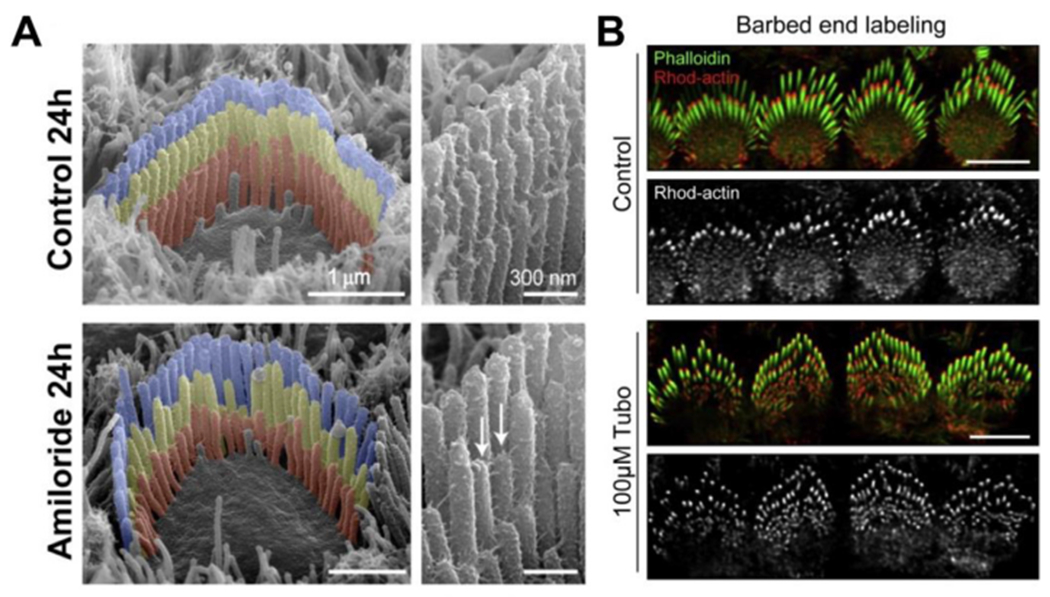Fig. 3.

MET currents adaptively shape the stereocilia cytoskeleton. (A) Scanning electron microscopy (SEM) of hair bundles treated with a pharmacological inhibitor of the MET channel (amiloride), leaving tip-links intact. After 24 h of treatment, row 2 and 3 stereocilia with active MET channels have abnormal architecture, indicating a significant remodeling of the actin cytoskeleton. (B) Fluorescence confocal imaging of permeabilized hair cells incubated with rhodamine-labeled actin monomers to reveal the presence of barbed ends available to support polymerization. Free barbed ends are normally concentrated at the tips of row 2, but this is reduced following pharmacological blockade of MET currents using tubocurarine. Scale bars are 5 μm. Images reproduced with permission from: (A) Vélez-Ortega et al. (2017) eLife 6:e24661, DOI:10.7554/eLife.24661. (B) McGrath et al. (2021) Current Biology 31 (6): 1141–1153, DOI: 10.1016/j.cub.2020.12.006.
